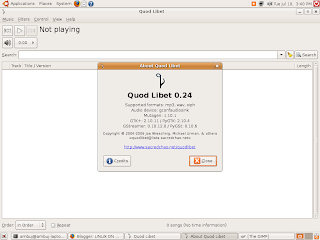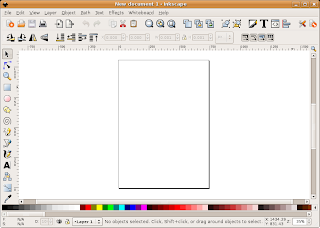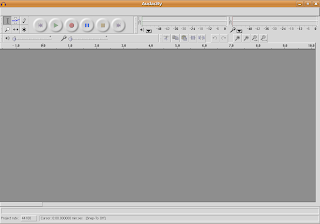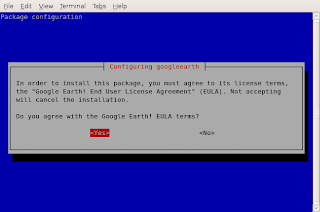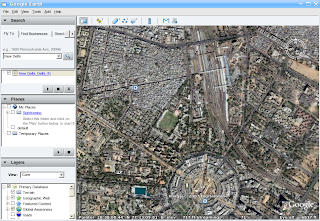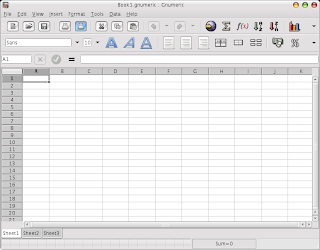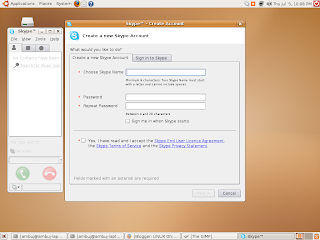Businesses, educational institutions, governmental agencies and other organizations around the world are converting1 their computer operating systems from Microsoft Windows to Linux at an increasing pace. They are likewise converting their application programs from commercial software to free software (also referred to as open source software). There are at least 25 reasons for this situation, including:
(1) Because it is licensed under a free software license2, Linux (as well as other free software) is available at no cost. It can be downloaded from the Internet for free, and it can be purchased in disk or box form at trivial cost. One copy can be used on as many computers as desired with no restrictions. This is in sharp contrast to Microsoft Windows, which can easily cost US$100 or more per computer.
(2) Because it is free software, Linux is also free in the sense that anybody is permitted to modify it, including its source code, in any way desired. If modified versions are not redistributed (i.e., given away or sold outside of an organization), they can be kept secret. This is also in sharp contrast to Microsoft Windows, for which modification of the software is generally not permitted. Source code is the original version of a program as it is written by a programmer using a programming language and before being converted by a compiler into a form such that its instructions can be understood directly by a computer's CPU (central processing unit); it is generally necessary to have the source code in order to be able to make changes to a program. This ability to freely experiment with and modify the source code, and to do so without disclosing the modifications to outsiders, has been a very important consideration for a number of large organizations3.
(3) High quality support for Linux is available for free on the Internet, including in newsgroups and other forums. Some people claim that this support is at least as good as that provided for proprietary (i.e., commercial) operating systems for a fee. Linux support can also be purchased on a commercial basis if desired. Among the types of support that can be required for operating systems are help with customization, assistance in installing new programs, patches to cope with new security threats and patches to fix newly discovered bugs (i.e., defects). Fortunately, the need for the last two types is relatively infrequent for Linux.
(4) There is little possibility that support for Linux will be discontinued at some future date due to planned obsolescence or for any other reason. This is because the source code will always be available to anyone who wants it, including individuals who provide support for free over the Internet and businesses which provide it for a fee. In contrast, with Microsoft Windows and other proprietary software for which the source code is usually kept secret, obtaining support becomes difficult (from both a technical and a legal point of view) if the developer decides to withdraw it (for example in order to try to force users to pay for upgrades to newer versions).
(5) There is little or no fear of major obsolescence, planned or otherwise, with Linux. This is because the UNIX architecture on which it is based has been exhaustively tested and refined for more than 35 years and has proven to be extremely efficient, robust and secure. Improvements continue at a rapid pace, but new versions remain basically compatible with the underlying UNIX architecture.
(6) There are no forced upgrades4 for Linux users. This because older versions continue to be supported (e.g., with the development of new security patches and device drivers) and because newer versions, if desired, are available for free (as is all free software) and are typically highly compatible with older versions. The developers of proprietary software, however, have strong financial incentives to engage in planned obsolescence, namely, in order to induce users of earlier versions to spend money to buy or lease new versions.
(7) Should a user decide to upgrade to a newer version of Linux, there are no licensing fees or other software costs if the user selects a free distribution (i.e., version). Moreover, the training, program modification/conversion, hardware acquisition and other costs associated with upgrading to a new version are also relatively low due to the compatibility with earlier versions.
(8) Linux has no onerous requirements for keeping track of licenses. In a company with hundreds or thousands of computers, a number of full time personnel can be required just to make sure that all of the computers in use are in compliance with the complex licensing terms of the EULAs (end user license agreements) for Microsoft Windows, Microsoft Office and other proprietary software. And for Linux users there is no fear of surprise audits by the BSA (Business Software Alliance)5, with possible severe penalties for minor license violations.
(9) Linux features superior security, including a very low rate of infection by viruses, trojans, worms, spyware and other malware. This is because UNIX and all of its descendants (including Linux) been designed from the ground up with security in mind, rather than having attempts at security tacked on as an afterthought. For example, users do not routinely use the system as the root (i.e., administrative) user, thereby protecting key system files even in the event of a break-in by a malicious intruder. Also, a robust firewall is included in major distributions and it is enabled by default. Another important factor is the free availability of the source code, which allows thousands of people around the globe to search for security vulnerabilities in it6.
(10) Linux is highly resistant to system crashes and rarely needs rebooting (i.e., restarting). This can be very important for large organizations for which even a few minutes of down time can result in a substantial cost. The reason is that Linux has been designed from the ground up to be an extremely stable and robust operating system, incorporating all that has been learned about attaining these goals from the more than 35 years of history of Unix-like operating systems.
(11) Although the number and variety of application programs for Linux are not yet as large as those available for the Microsoft Windows operating systems, an extensive selection already exists and it is continuing to increase rapidly as more and more developers start creating programs for Linux. Most Linux applications are also free software (including nearly all of the most popular ones), and many have features and performance equal or superior to those of comparable applications for use with Microsoft Windows. In fact, users often find that all the applications that they want are freely available on the Internet and that it is no longer necessary to purchase any commercial software.
(12) There is a choice of numerous distributions (several hundred) of Linux, each with its own unique set of characteristics but all basically compatible with each other. This allows users to select the versions which best meet their specific requirements. It also means that if one provider of Linux were to go out of business, there would still be many others from which to choose. Moreover, it fosters a healthy competition among them, thereby contributing to the continuous improvements in Linux's quality and performance. If the choice seems overwhelming, it is usually difficult to make a mistake by selecting one of the most popular distributions, such as Red Hat or SuSE.
(13) Linux features a high degree of flexibility of configuration, and a great deal of customization can be accomplished very easily and without having to modify the source code. For example, it is a simple matter to configure Linux during installation so that it will be optimized for use as a workstation, desktop computer, notebook computer, web server, database server or a router. Likewise, the appearance and behavior of the desktop, including icons and menus, can be configured in an almost infinite number of ways, according to user tastes or requirements. They can even be made to resemble Microsoft Windows. Should this not be enough, the ability to freely access, revise and recompile the source code allows virtually unlimited flexibility of configuration.
(14) Linux and other free software uses open format file formats. These are formats for word processing, spreadsheet and other file types that conform to industry-wide standards and which can be used by any developer of software to create compatible programs, in contrast to the closed formats commonly used by some proprietary software. This eliminates the problem of lock-in to proprietary standards, with the consequent difficulty and expense of switching to other software in the future. It allows the user to have complete control of its data, particularly in the event that at some future date the developer who originally created the software goes out of business or stops supporting its earlier software.
(15) Linux is generally faster for a given set of hardware specifications. This is due to greater optimization of the source code, including far less code bloat.
(16) Linux features a high degree of compatibility with other operating systems. For example, it can read, write, copy, erase and otherwise manipulate data that resides on Microsoft Windows partitions on the same hard disk drive (HDD), act as a Windows server for a network containing Windows clients, format disks for use with Windows, and even run Windows programs directly if necessary. In contrast, the Microsoft Windows operating systems cannot access HDD partitions that contain other operating systems, cannot format disks for other operating systems, etc.
(17) Very high ethical standards are maintained for Linux and other free software, in large part due to the very openness of their development process and the free availability of the source code. Linux has never been convicted in a Federal court of violation of U.S. antitrust laws or other crimes, nor has it had to pay penalties for the unauthorized copying of technology developed by other companies. Antitrust refers to government policy to regulate or break up monopolies in order to promote free competition and attain the benefits that such competition can provide to the economy and to society as a whole.
(18) Linux reduces the need to upgrade or replace hardware when upgrading to newer versions. This is because its code is very efficient and compact, thus allowing it to work effectively on older computers that are not suitable for the newest versions of Microsoft Windows.
(19) Linux is capable of operating on a wide variety of platforms (i.e., processor and system types), rather than just being limited to Intel-compatible processors and computers. It scales well and is well suited for use on a diverse array of equipment ranging from supercomputers to industrial robots to electronic medical equipment to cell phones (and can even run on a wristwatch).
(20) Linux is a superior choice for use in academic institutions for a number of reasons. Among them is the fact that there are no secrets (in sharp contrast to proprietary software), thereby providing students the opportunity to study how computers really work rather than to just learn how to use them. Many educators are convinced that it is far more important for students to study computer science fundamentals than to practice specific applications (such as Microsoft Word or Microsoft PowerPoint). One reason is that computer science fundamentals will still be valid many years from now, whereas the specific application programs, especially the proprietary ones that do not conform to industry-wide standards, are constantly changing and those currently in use will likely become obsolete in a few years7.
(21) For governmental agencies, Linux and other free software allows for transparency of data because it stores the data in formats consistent with industry-wide standards. This is in contrast to the proprietary, closed formats characteristic of commercial software. Such transparency is important for maintaining an effective democracy. Keeping non-secret data in standards-compliant formats allows anyone to access it without having to purchase expensive proprietary software. Also, storing secret data in standards-compliant formats is widely regarding as being more secure than keeping it in proprietary formats.
(22) With Linux and other free software there is little reason to fear the existence of backdoors, in large part because all of the source code is available for inspection. A backdoor is a secret method for obtaining remote access to a computer. There is a (not unjustified) concern by many foreign governments and corporations that back doors have been covertly inserted into proprietary software that could allow the software developer and agencies of other governments to snoop into their most confidential data.
(23) Using and advocating Linux helps foster a healthy diversity and increased competition throughout the software industry. Such competition can promote technological advance, improve performance and lower costs for open source software and proprietary software alike. Both economic theory and hundreds of years of real-world experience clearly show that monopolies have little incentive to innovate, tend to produce shoddy products, charge inflated prices and tend to corrupt the political system.
(24) Linux and other free software have not only caught up with, or some cases surpassed, their proprietary counterparts, but they are also developing at a faster pace8. This trend will accelerate as demand for such software continues to grow and more and more individuals and organizations become actively involved it its development.
(25) Linux and other free software provide the opportunity for users to contribute to the advance of software technology because the source code is freely available to study, improve, extend and redistribute. This has been fairly common, and the most notable corporate example has been IBM. In addition to giving back to the software community and being a virtue in itself, such contributions can have great public relations value.
(26) There are actually more than 25 reasons that organizations around the world are converting to Linux and other free software. A twenty-sixth reason is that with Linux, in contrast to the Microsoft Windows operating systems, there is no need to defragment HDDs. Fragmentation, which is the spreading of data into non-contiguous locations on a hard disk drive, can reduce the efficiency of data storage and slow down computer operation. Defragmentation is not difficult, but it can be an annoyance to have to do it periodically, and it is unnecessary with a well designed operating system.
There are also several situations in which businesses and other organizations might benefit from converting their operating systems from Linux to Microsoft Windows:
(1) An organization that is downsizing its operation and already has valid but unused licenses for Microsoft Windows might be able to reduce personnel costs by replacing its Linux experts with Windows administrators, as the latter can generally be hired for significantly less than Linux administrators.
(2) Were Microsoft to offer an organization an extremely low cost incentive package, including providing long-term licenses (and upgrades) at nominal cost, paying for new hardware and providing free training and support, this could be a very attractive proposition. In fact, it could be a win-win situation because of the great publicity value that could accrue to Microsoft from a company or other organization converting from Linux to Windows.





